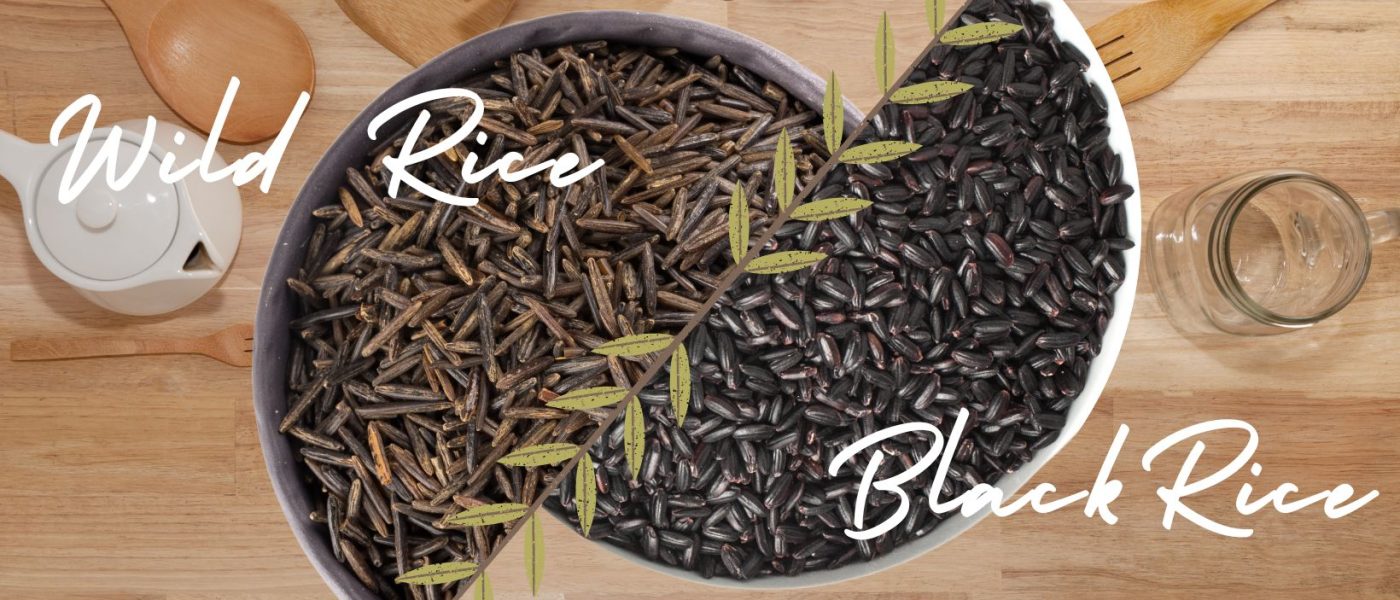
Wild rice and black rice are two distinct types of rice, each with their own unique characteristics in terms of appearance, flavor, nutritional content, and origin. Here’s a breakdown of the differences between them:
- Origin and Species:
- Wild Rice: Wild rice is not actually a type of traditional rice; it’s a grass seed. It belongs to the Zizania genus and is native to North America. There are several species of wild rice, including Zizania palustris and Zizania aquatica.
- Black Rice: Also known as “forbidden rice,” black rice is a type of rice that is typically of the species Oryza sativa. It has a deep black or purplish color when uncooked, which turns to a dark purple when cooked.
- Color and Appearance:
- Wild Rice: Wild rice has a dark brown or black color with a long, slender grain. The grains are typically longer and more irregular in shape compared to regular rice.
- Black Rice: As the name suggests, black rice has a striking black or deep purple color. It’s visually appealing and often used in dishes to add a pop of color.
- Flavor and Texture:
- Wild Rice: Wild rice has a distinct earthy and nutty flavor. Its texture is firmer and more chewy than most traditional rice types, and the grains can vary in texture from slightly crunchy to tender.
- Black Rice: Black rice has a nutty, slightly sweet flavor with a chewy texture. It retains its firmness after cooking, making it a good choice for both savory and sweet dishes.
- Nutritional Content:
- Wild Rice: Wild rice is higher in protein and dietary fiber compared to many traditional rice varieties. It’s also a good source of B vitamins, minerals, and antioxidants.
- Black Rice: Black rice is often touted for its high antioxidant content, particularly anthocyanins, which give it its dark color. It’s also a good source of dietary fiber, iron, and other nutrients.
- Culinary Uses:
- Wild Rice: Wild rice is often used in soups, stews, stuffing, side dishes, and as a base for grain bowls. Its unique flavor and texture make it a versatile ingredient.
- Black Rice: Black rice can be used in a variety of dishes, such as salads, sushi, risottos, and even desserts like rice pudding or black rice porridge.
- Cultivation:
- Wild Rice: Wild rice grows naturally in freshwater lakes and rivers, primarily in North America. It’s traditionally harvested by Native American communities.
- Black Rice: Black rice is cultivated in various parts of the world, including Asia and the United States.
In summary, wild rice and black rice are distinct grains with different colors, flavors, textures, and origins. While black rice is a type of traditional rice known for its striking color and sweet flavor, wild rice is a grass seed native to North America with an earthy, nutty taste and distinctive texture.
Shop Nawapo wild rices here! https://nawapo.com/product-category/food/wild-rice-2/










